Panamanian Food is a vibrant tapestry of flavors waiting to be explored, and larosafoods.com is your guide to unlocking its culinary secrets. From hearty stews to tantalizing street food, Panama’s gastronomic landscape offers a delightful adventure for every palate; discover traditional dishes and culinary delights. Ready to dive in? Let’s explore the delicious world of Panamanian cuisine, featuring culinary heritage, local ingredients, and unique cooking styles that define Panama’s rich food culture.
1. What Makes Panamanian Food Unique?
Panamanian food stands out due to its diverse influences and unique blend of flavors. This cuisine is a captivating fusion of indigenous traditions, Spanish colonial heritage, African influences, and the contributions of various ethnic groups who have settled in the country. Panama’s geographical location as a land bridge between North and South America and its role as a global crossroads, especially after the opening of the Panama Canal, have further enriched its culinary identity.
1.1 What Are The Historical Influences On Panamanian Cuisine?
Panamanian cuisine reflects a rich tapestry of historical influences, each layer adding unique flavors and techniques to the country’s culinary identity:
- Indigenous Heritage: The earliest inhabitants of Panama, including the Chibchan, Chocoan, and Cueva peoples, cultivated corn, beans, and various fruits and vegetables, which remain staples in Panamanian cooking. Their traditional methods of preparing and combining these ingredients form the base of many dishes.
- Spanish Colonial Influence: Beginning in the 16th century, Spanish colonization introduced new ingredients such as rice, beef, pork, and dairy products. Spanish cooking techniques, like sautéing and stewing, were also adopted and adapted to local ingredients.
- African Impact: During the colonial era, enslaved Africans brought with them culinary traditions that significantly influenced Panamanian cuisine. Dishes like “one-pot” (a precursor to paella) and the use of plantains and root vegetables are direct results of African culinary heritage.
- The Panama Canal Era: The construction of the Panama Canal in the late 19th and early 20th centuries brought workers from all over the world, including the Caribbean, China, and India. Each group contributed unique flavors and dishes.
This blend of influences has resulted in a diverse and flavorful cuisine that is uniquely Panamanian.
1.2 What Are The Key Ingredients In Panamanian Dishes?
Key ingredients form the foundation of Panamanian dishes, lending their distinct flavors and textures to the cuisine:
| Ingredient | Description | Use in Panamanian Cuisine |
|---|---|---|
| Rice | A staple grain, often served as a side dish or incorporated into main courses. | Accompanies many meals, used in dishes like arroz con pollo (rice with chicken) and arroz con guandú (rice with pigeon peas). |
| Corn | A fundamental ingredient, used in various forms from fresh kernels to cornmeal. | Used to make tortillas, tamales, and drinks like chicheme (a sweet corn beverage). |
| Plantains | Versatile fruit that can be used when green (unripe) or ripe, providing different flavors and textures. | Green plantains are fried to make patacones (tostones), while ripe plantains are often baked or fried as a sweet side dish. |
| Yuca (Cassava) | A starchy root vegetable, also known as cassava, used similarly to potatoes. | Boiled, fried, or mashed; used in dishes like carimañolas (yuca fritters stuffed with meat). |
| Seafood | Given Panama’s extensive coastline, seafood is abundant and widely used. | Fish, shrimp, and other seafood are key ingredients in ceviche and paella, reflecting the coastal influence on Panamanian cuisine. |
| Chicken | A popular protein, often used in stews, soups, and rice dishes. | Key ingredient in sancocho de gallina (chicken soup) and arroz con pollo. |
| Beef and Pork | These meats are commonly used in stews, grilled dishes, and fillings. | Used in ropa vieja (shredded beef stew), bistec picado (chopped steak), and as fillings for tamales. |
| Pigeon Peas | Also known as guandú, these legumes are a staple in Panamanian cuisine. | Used in arroz con guandú, a traditional rice dish often served during holidays. |
| Coconut Milk | Adds a creamy and slightly sweet flavor to dishes. | Used in arroz con guandú and other coastal dishes to enhance flavor and texture. |
| Spices and Herbs | Culantro, oregano, cumin, and other spices enhance the flavors of Panamanian dishes. | Culantro (a stronger version of cilantro) is used extensively in soups and stews, while other spices add depth to meat and vegetable dishes. |
| Vegetables | Tomatoes, onions, bell peppers, and garlic are foundational ingredients used in many dishes. | These vegetables form the base of many sauces and stews, providing essential flavors and nutrients. |
| Nance | A small, sour fruit used to make desserts. | Key ingredient in pesada de nance, a traditional Panamanian dessert. |
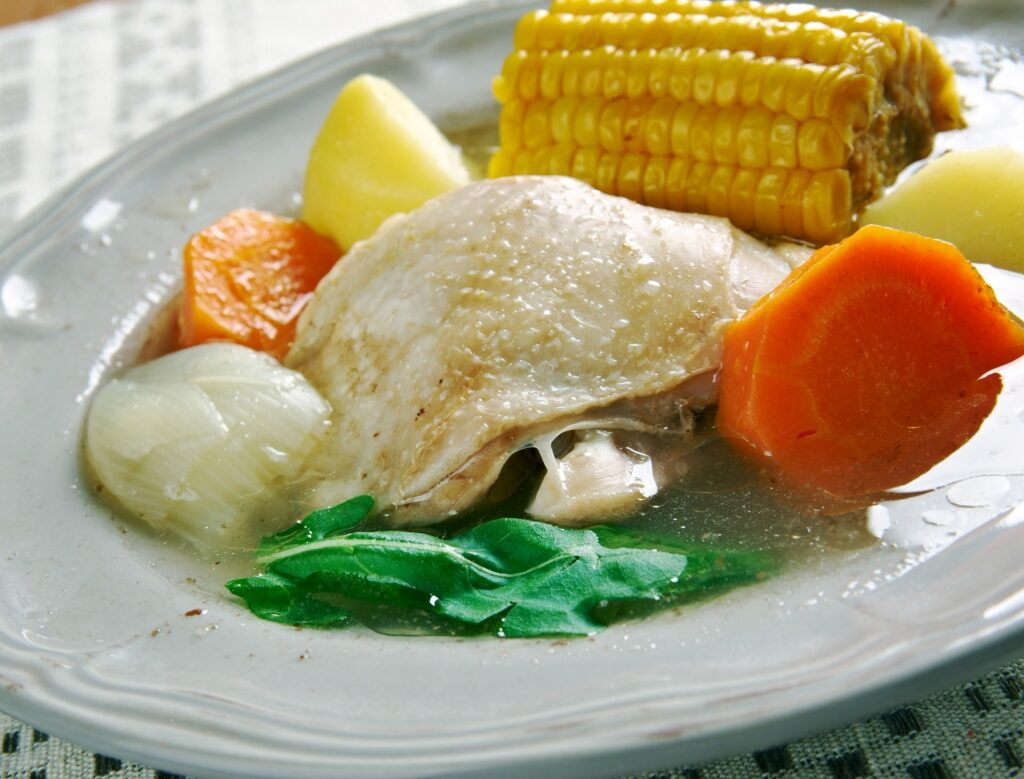
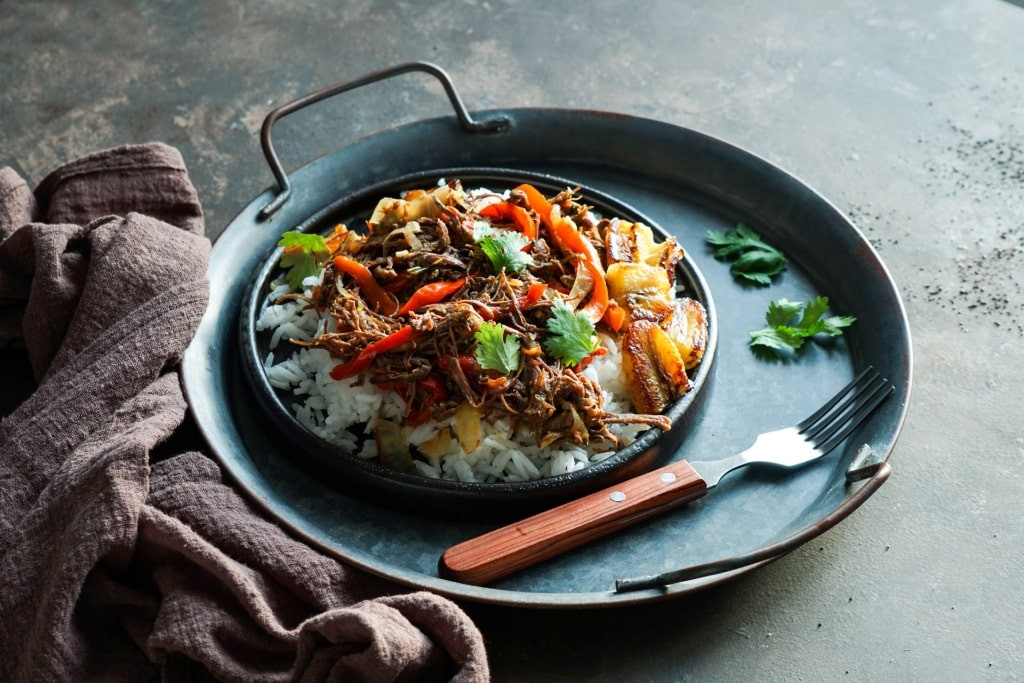
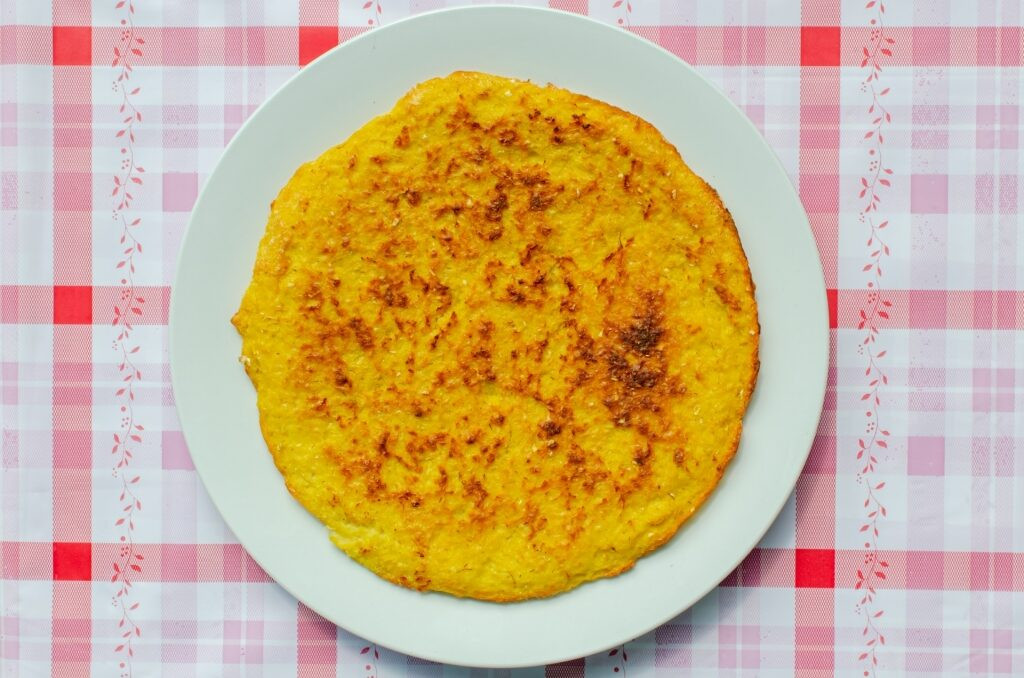
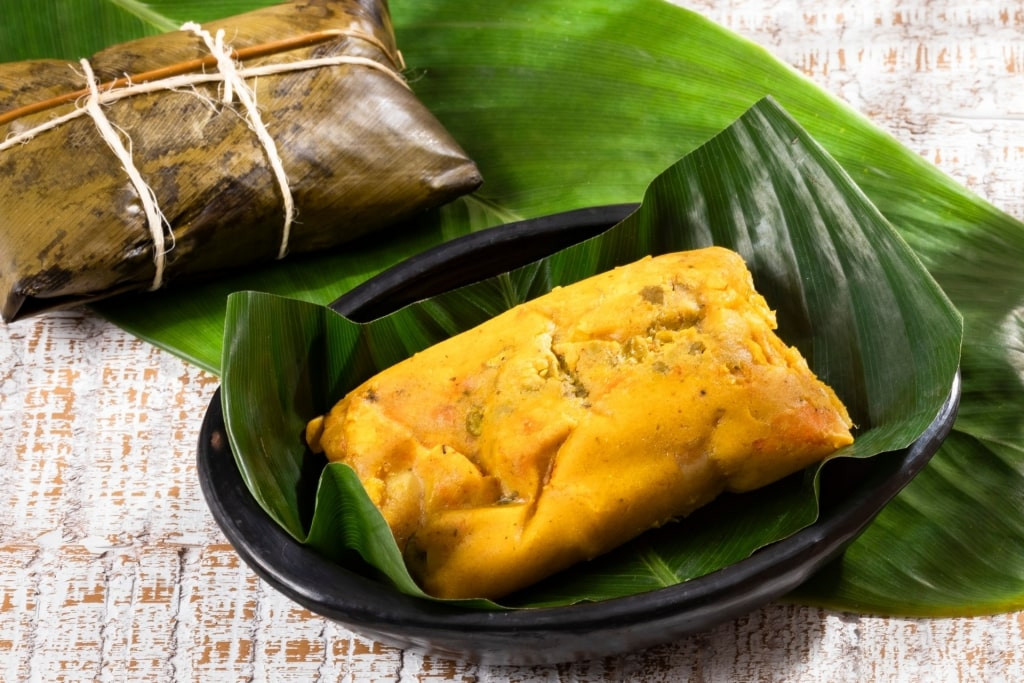
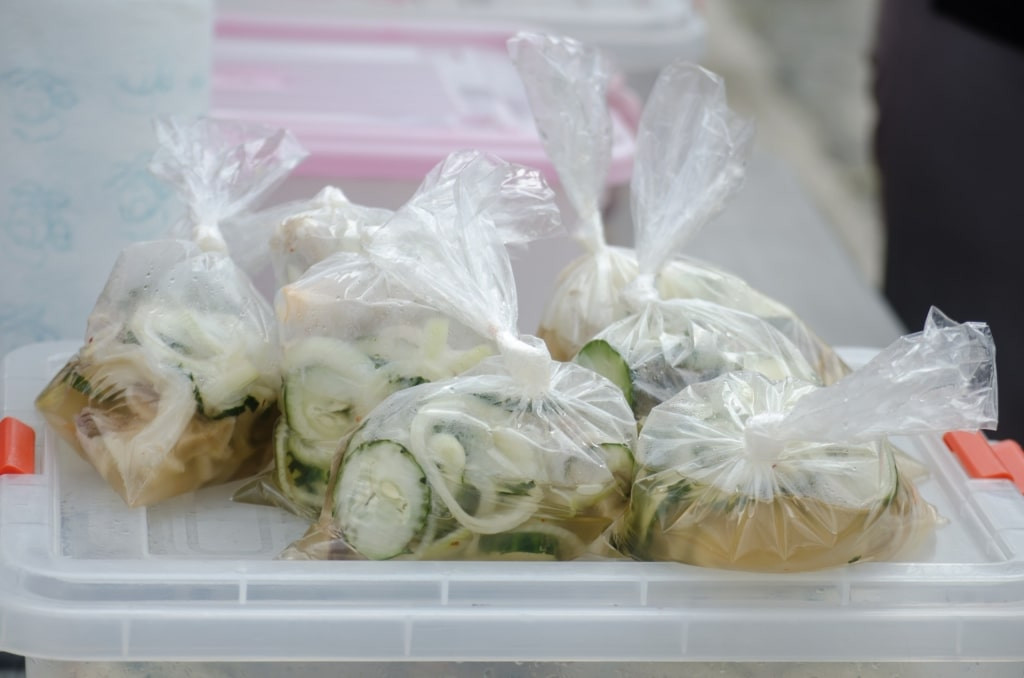
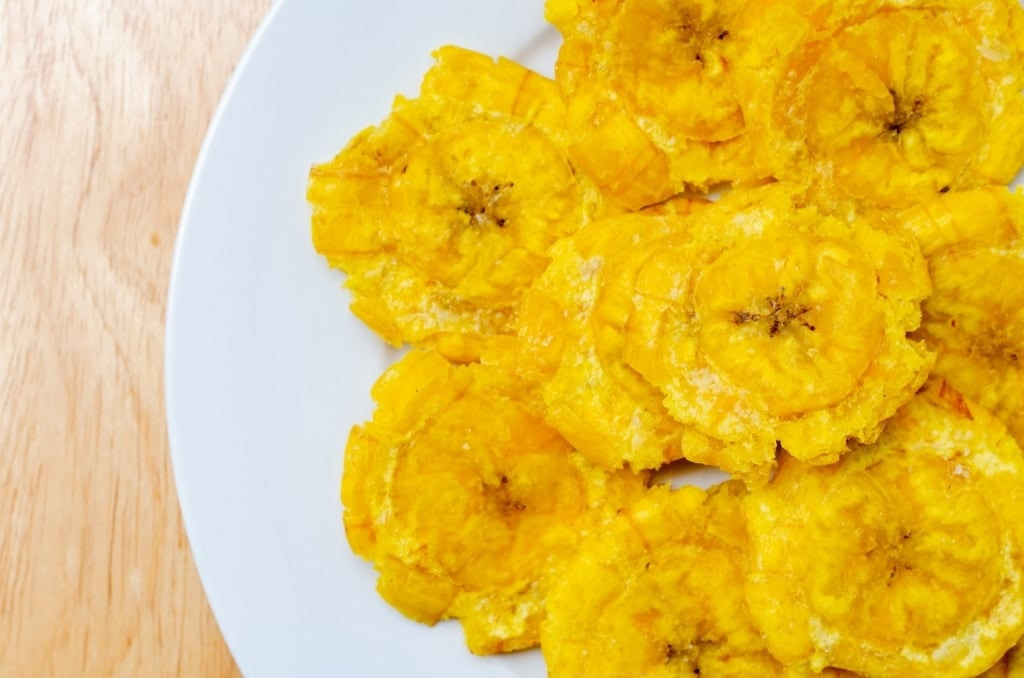
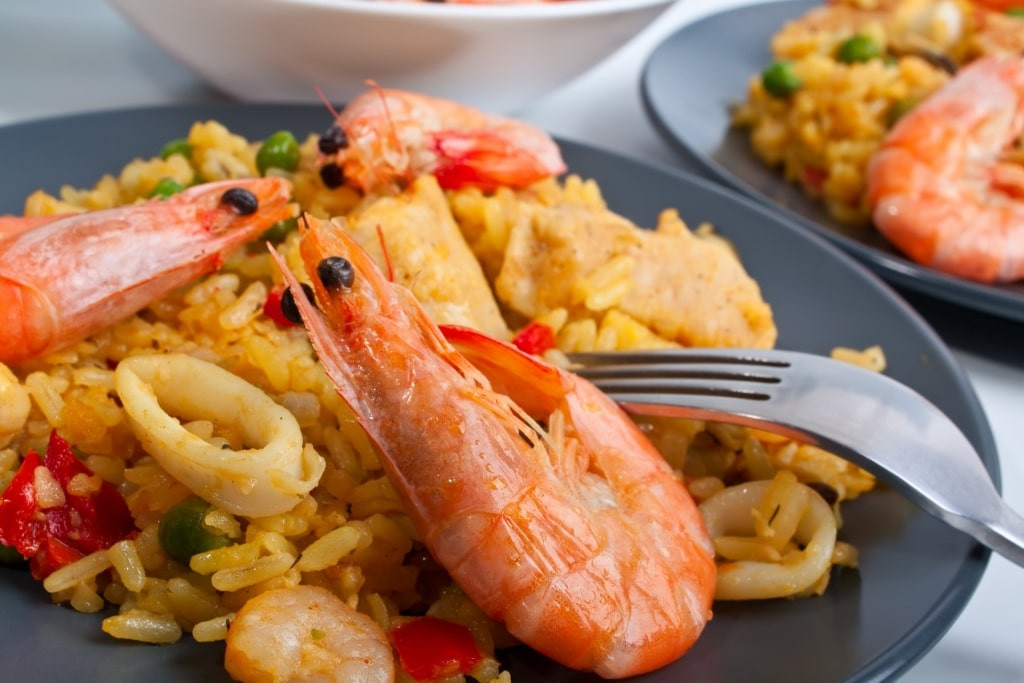
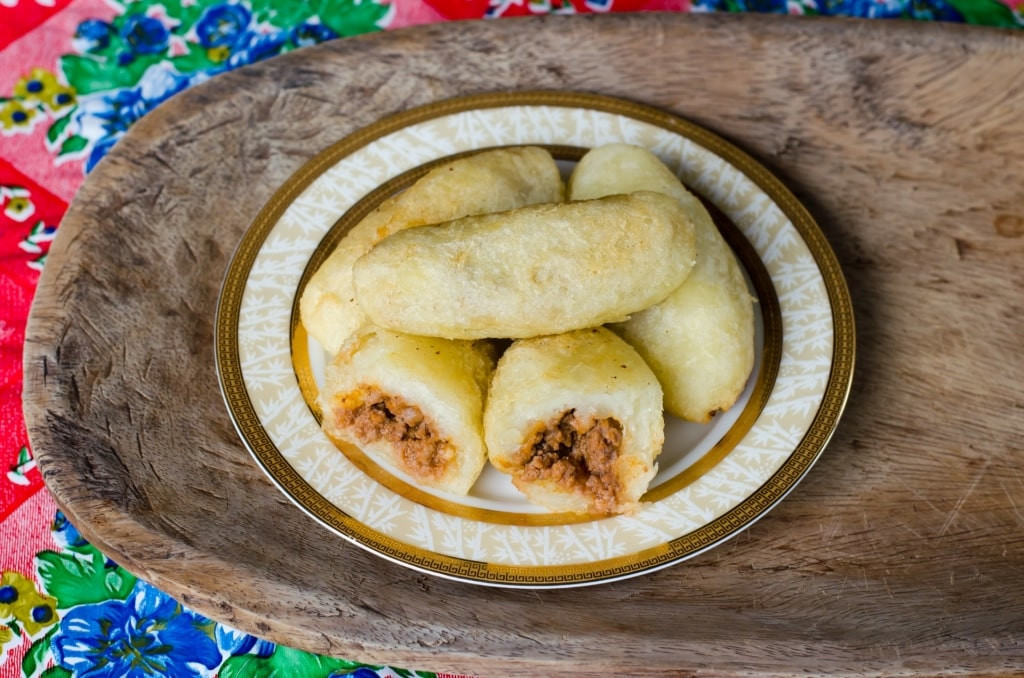
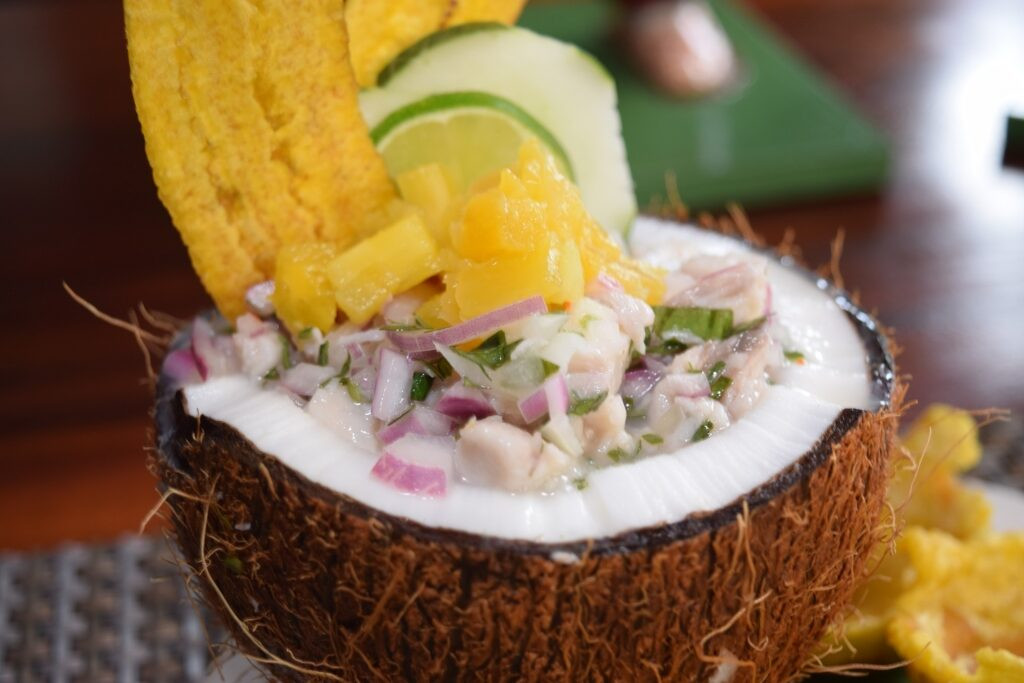
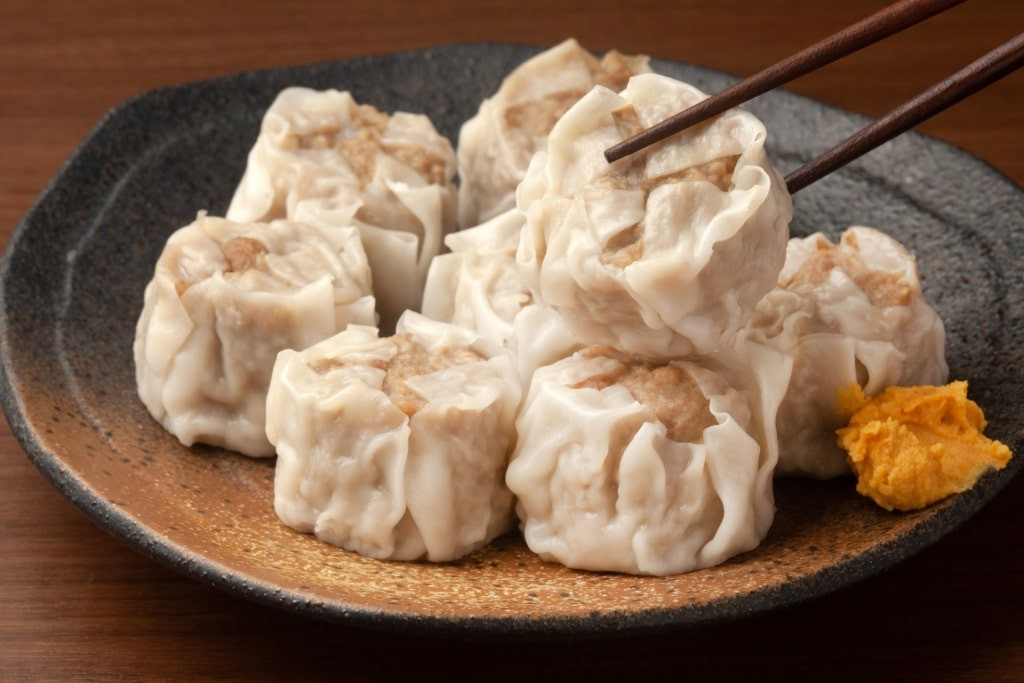
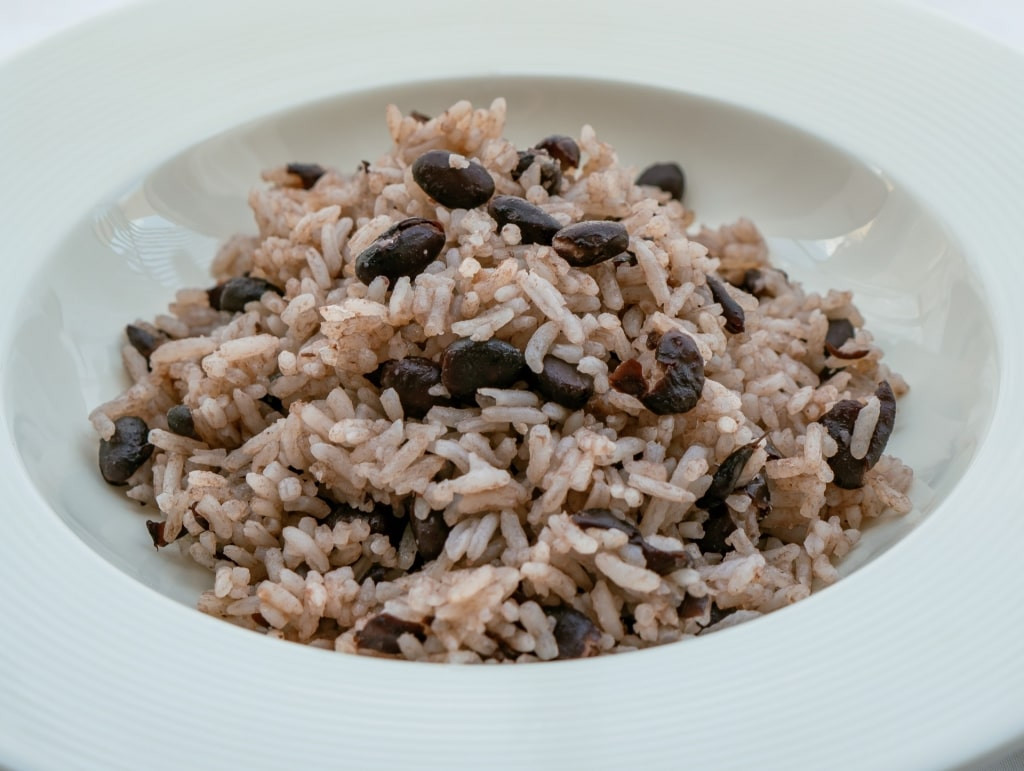
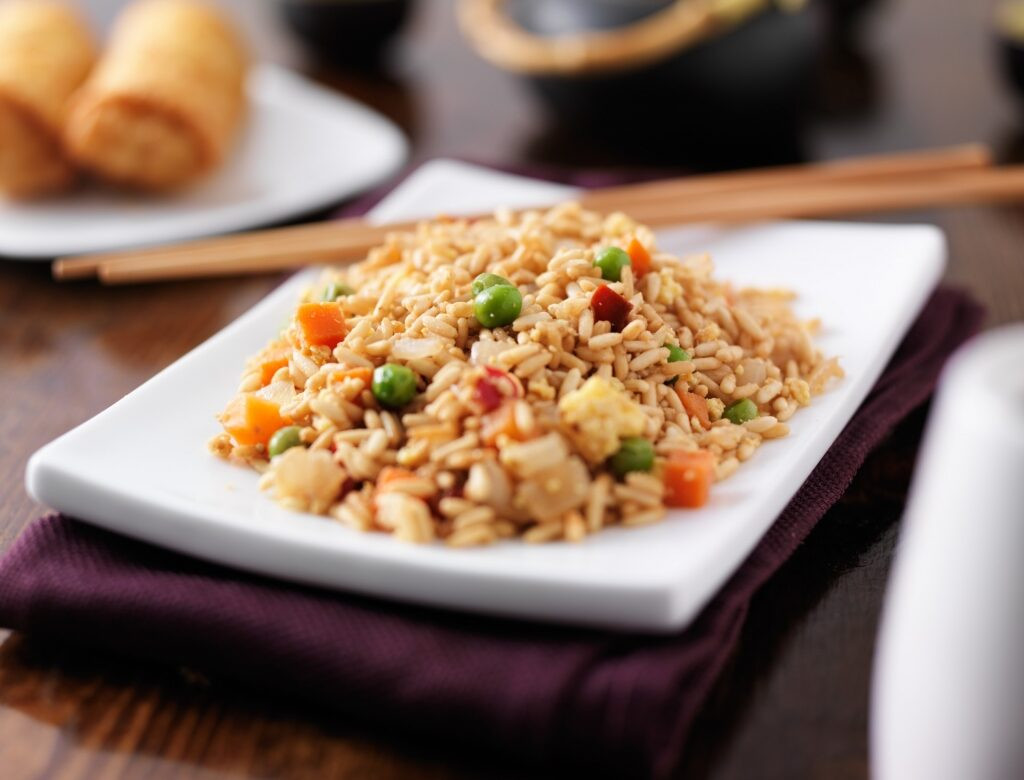
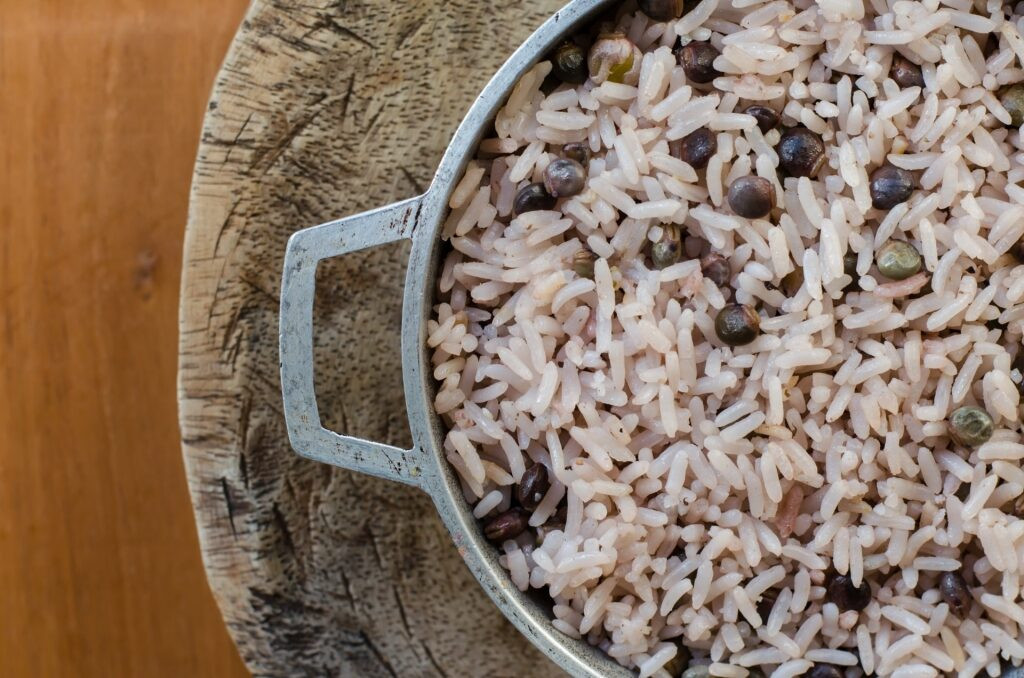
These ingredients, combined with diverse culinary techniques, create the unique and flavorful profile of Panamanian food.
2. What Are The Must-Try Panamanian Food Dishes?
If you’re eager to explore the heart of Panamanian cuisine, here are some must-try dishes that showcase the country’s diverse flavors and culinary traditions:
2.1 Sancocho De Gallina: The National Comfort Food
Sancocho de gallina is considered the national dish of Panama and it is a hearty, flavorful chicken soup or stew celebrated for its comforting and restorative qualities.
Alt text: Steaming bowl of Sancocho de Gallina, Panama’s iconic chicken soup, showcasing its rich broth and diverse ingredients.
2.1.1 What Ingredients Make Sancocho De Gallina Special?
Sancocho de gallina is made with a mix of ingredients, each contributing to its distinctive flavor and nutritional value. Key components include:
- Chicken (Gallina): Typically, a whole chicken or large pieces are used, providing a rich and savory broth.
- Root Vegetables: Yuca (cassava), potatoes, and ñame (yam) add heartiness and a variety of textures.
- Plantains: Both green and ripe plantains contribute sweetness and starchiness to the stew.
- Corn on the Cob: Adds a sweet and juicy element.
- Vegetables: Onions, tomatoes, and bell peppers form the base of the flavor profile.
- Herbs and Spices: Culantro (a stronger version of cilantro), oregano, garlic, and ají chombo (Panamanian hot pepper) infuse the dish with aromatic and spicy notes.
2.1.2 What Are The Health Benefits Of Eating Sancocho De Gallina?
Sancocho de gallina is not only delicious but also packed with health benefits:
- Nutrient-Rich: Provides a good source of vitamins and minerals from the variety of vegetables and chicken.
- Hydrating: The broth helps keep you hydrated, especially beneficial in Panama’s tropical climate.
- Immune-Boosting: Often consumed to combat colds and flu due to its high vitamin and mineral content.
- Digestive Aid: The warm broth and easily digestible ingredients can soothe the digestive system.
2.1.3 How Is Sancocho De Gallina Traditionally Prepared?
Preparing sancocho de gallina involves a few key steps:
- Sautéing: Onions, garlic, and peppers are sautéed to create a flavorful base.
- Simmering: Chicken is added to a large pot with water and simmered until tender.
- Adding Vegetables: Root vegetables, plantains, and corn are added and cooked until soft.
- Seasoning: Culantro, oregano, and other spices are added to enhance the flavor.
- Serving: The soup is served hot, often accompanied by rice or tortillas.
2.1.4 Where Can You Find The Best Sancocho De Gallina In Panama?
- Local Markets: Many market stalls offer freshly made sancocho.
- Traditional Restaurants: Restaurants specializing in Panamanian cuisine often have it on the menu.
- Family Homes: The best sancocho is often found in Panamanian homes, where it is a staple dish.
2.2 Ropa Vieja: A Taste Of History
Ropa Vieja, translating to “old clothes” in Spanish, is a popular Panamanian dish featuring shredded beef stewed in a flavorful tomato-based sauce.
Alt text: A vibrant plate of Panamanian Ropa Vieja, showcasing the tender shredded beef simmered in a rich tomato-based sauce with colorful vegetables.
2.2.1 What’s The Story Behind The Name “Ropa Vieja?”
The name “ropa vieja,” meaning “old clothes,” comes from a Spanish legend: a poor man, with nothing to offer, shredded his old clothes to cook as a stew. Miraculously, the clothes transformed into a flavorful meat dish, hence the name.
2.2.2 How Is Ropa Vieja Prepared?
The preparation of ropa vieja involves several key steps:
- Beef Preparation: The beef, typically flank or skirt steak, is cooked until tender and then shredded.
- Sautéing Vegetables: Onions, bell peppers, and garlic are sautéed to create a flavorful base.
- Simmering: The shredded beef is added to the sautéed vegetables with tomatoes, tomato sauce, and spices. The mixture simmers until the flavors meld together.
- Seasoning: Common spices include cumin, oregano, bay leaf, and a touch of paprika.
- Serving: Ropa vieja is often served with rice, plantains, and black beans.
2.2.3 What Makes Ropa Vieja A Must-Try Dish?
- Flavorful: The slow cooking process allows the beef to absorb the flavors of the vegetables and spices, resulting in a rich and savory dish.
- Hearty: The combination of beef, vegetables, and rice makes it a filling and satisfying meal.
- Cultural Significance: Ropa vieja is a traditional dish with roots in both Spanish and Caribbean cuisine, making it a significant part of Panamanian culinary heritage.
2.2.4 Where Can You Enjoy Authentic Ropa Vieja?
- Traditional Restaurants: Many Panamanian restaurants serve ropa vieja, often as part of a lunch or dinner special.
- Family-Owned Eateries: Small, family-owned restaurants, known as “fondas,” are excellent places to find authentic and homemade ropa vieja.
- Home Cooking: If you have the opportunity to dine with a Panamanian family, you’re likely to encounter this dish, as it’s a common household favorite.
2.3 Tortillas: A Staple From Indigenous Roots
Panamanian tortillas are a fundamental part of the country’s cuisine, tracing back to its indigenous peoples. Unlike the thin, flexible tortillas found in Mexico, Panamanian tortillas are thicker, made from corn dough that is either deep-fried or grilled.
Alt text: A rustic plate of Panamanian tortillas, showcasing their golden-brown, slightly thicker texture, highlighting their indigenous culinary heritage.
2.3.1 What Makes Panamanian Tortillas Different?
- Thickness: Panamanian tortillas are significantly thicker than Mexican tortillas.
- Preparation: They are made from corn dough that is either deep-fried or grilled, giving them a unique texture and flavor.
- Ingredients: Typically made with just corn, water, and salt, offering a simple, authentic taste.
2.3.2 How Are Tortillas Traditionally Made?
The traditional method of making Panamanian tortillas involves:
- Preparing the Dough: Corn is cooked with lime (calcium hydroxide), then ground into a dough called masa.
- Shaping: The masa is formed into thick, round patties.
- Cooking: The tortillas are either deep-fried until golden brown and crispy or grilled on a hot comal (griddle).
2.3.3 How Are Tortillas Used In Panamanian Cuisine?
- Side Dish: Tortillas are often served as a side dish with stews, soups, and other entrées.
- Breakfast Staple: Many locals start their day with tortillas topped with eggs and cheese.
- Snack: They can be enjoyed on their own or with various toppings.
2.3.4 Where Can You Find Authentic Panamanian Tortillas?
- Local Markets: Market stalls often sell freshly made tortillas.
- Traditional Restaurants: Restaurants specializing in Panamanian cuisine offer tortillas as a staple side.
- Street Vendors: Street vendors frequently sell tortillas, especially during breakfast hours.
2.4 Tamales: A Festive Delicacy
Tamales are a beloved dish in Panama, shared with many Central and South American countries. They consist of corn dough filled with a variety of ingredients, wrapped in banana leaves, and steamed to perfection.
Alt text: A colorful plate of Panamanian tamales, each wrapped in a vibrant green banana leaf, showcasing the rich filling of seasoned meat and corn dough.
2.4.1 What Are The Key Components Of Panamanian Tamales?
- Corn Dough (Masa): The base of the tamale, made from ground corn.
- Filling: Common fillings include chicken, beef, pork, vegetables, or a combination of these.
- Wrapping: Banana leaves are used to wrap the tamales, imparting a subtle flavor and preventing burning during cooking.
2.4.2 How Are Tamales Traditionally Prepared?
- Preparing the Dough: Corn is cooked, ground, and mixed with lard or vegetable oil and seasonings to create the masa.
- Making the Filling: The meat or vegetables are cooked and seasoned with spices.
- Assembling the Tamales: A portion of masa is spread on a banana leaf, filled with the meat mixture, and wrapped securely.
- Steaming: The wrapped tamales are steamed for several hours until the dough is cooked through.
2.4.3 Why Are Tamales Considered A Festive Dish?
- Labor-Intensive: The preparation of tamales is time-consuming, making them a special dish reserved for holidays and celebrations.
- Communal Activity: Making tamales is often a group activity, bringing families and communities together.
- Symbolic: Tamales are a symbol of cultural heritage and are often served at weddings and other significant events.
2.4.4 Where Can You Find Delicious Tamales?
- Local Markets: Tamales are commonly sold at market stalls.
- Traditional Restaurants: Many restaurants specializing in Panamanian cuisine offer tamales.
- Family Gatherings: The best tamales are often found at family gatherings and celebrations.
2.5 Sao: An Adventurous Culinary Experience
Sao is a unique and flavorful Panamanian dish made from pickled pigs’ feet. Originating during the time of slavery, it showcases how African slaves ingeniously transformed discarded ingredients into a culinary delight.
Alt text: A close-up of Sao, a traditional Panamanian dish featuring pickled pigs’ feet, showcasing its savory and tangy flavors, often served in a clear plastic container.
2.5.1 What Makes Sao A Unique Dish?
- Unconventional Ingredient: Sao utilizes pigs’ feet, an ingredient not commonly used in contemporary cuisine.
- Pickling Process: The pigs’ feet are pickled, giving them a tangy and slightly sour flavor.
- Historical Significance: It represents the resourcefulness of African slaves who created delicious meals from what was available to them.
2.5.2 How Is Sao Traditionally Prepared?
- Boiling: The pigs’ feet are thoroughly boiled until tender.
- Pickling: The boiled pigs’ feet are then pickled overnight in a mixture of vinegar, lemon juice, onions, and cucumbers.
- Variations: Some modern versions use chicken feet instead of pigs’ feet.
2.5.3 Why Is Sao A Popular Dish?
- Unique Flavor Profile: The pickling process gives the pigs’ feet a distinctive tangy and sour flavor that is both refreshing and savory.
- Cultural Significance: Sao is a testament to the ingenuity and culinary traditions of African slaves in Panama.
- Adventurous Eating: For those looking to explore unconventional foods, Sao offers a unique culinary experience.
2.5.4 Where Can You Find Authentic Sao?
- Street Vendors: Sao is often sold by street vendors, especially in areas with a strong Afro-Caribbean influence.
- Local Markets: Some market stalls offer Sao as a ready-to-eat snack.
- Specialty Restaurants: A few restaurants specializing in traditional Panamanian cuisine may include Sao on their menu.
2.6 Patacones: Crispy Plantain Perfection
Patacones, also known as tostones in other Latin American countries, are twice-fried green plantains that are a staple snack and side dish in Panama.
Alt text: A stack of golden-brown Panamanian Patacones, or twice-fried green plantains, perfectly crispy and served with a side of dipping sauce.
2.6.1 What Makes Patacones So Popular?
- Crispy Texture: The double-frying process gives patacones a satisfyingly crispy texture.
- Versatile: They can be served as a snack, side dish, or appetizer.
- Simple Ingredients: Made with just green plantains, oil, and salt, they are naturally gluten-free and vegan.
2.6.2 How Are Patacones Traditionally Prepared?
- Peeling and Slicing: Green plantains are peeled and sliced into thick rounds.
- First Fry: The plantain slices are fried in oil until slightly softened.
- Smashing: The softened plantains are removed from the oil and smashed flat, typically using a pataconera (a special press) or a flat plate.
- Second Fry: The flattened plantains are fried again until golden brown and crispy.
- Seasoning: They are then seasoned with salt and served hot.
2.6.3 What Are Some Popular Ways To Enjoy Patacones?
- With Dipping Sauces: Commonly served with ketchup, mayonnaise, or a garlic-based sauce.
- As a Side Dish: Accompanies main dishes such as grilled meats, seafood, and stews.
- Topped: Can be topped with shredded beef, cheese, or other ingredients for a heartier snack.
2.6.4 Where Can You Find The Best Patacones?
- Street Vendors: Street vendors throughout Panama sell freshly made patacones.
- Restaurants: Most restaurants offer patacones as a side dish or appetizer.
- Beaches: Beachside kiosks often serve patacones as a popular snack for beachgoers.
2.7 Paella, Or One Pot: A Caribbean Twist
Paella, also known as “one pot,” is a flavorful rice dish with Caribbean influences. Originating from African slaves using leftover scraps of seafood, coconut, and rice, it is a testament to culinary creativity and resourcefulness.
Alt text: A vibrant plate of Panamanian Paella, or “One Pot,” showcasing its Caribbean influences with a mix of seafood, coconut, and rice.
2.7.1 How Did “One Pot” Originate?
“One pot” emerged from the culinary traditions of African slaves who utilized leftover ingredients to create a flavorful and satisfying meal. This dish reflects their ability to create something delicious from limited resources.
2.7.2 What Are The Key Ingredients In Panamanian Paella?
- Rice: The base of the dish, typically a medium-grain rice.
- Seafood: Shrimp, fish, and other seafood are common additions.
- Coconut Milk: Adds a creamy texture and a subtle sweetness.
- Vegetables: Onions, peppers, and tomatoes contribute to the flavor base.
- Caribbean Seasonings: Spices such as thyme, allspice, and Scotch bonnet peppers give the dish its unique Caribbean flair.
2.7.3 How Is Panamanian Paella Typically Prepared?
- Sautéing Vegetables: Onions, peppers, and tomatoes are sautéed to create a flavorful base.
- Adding Rice and Coconut Milk: Rice is added and cooked with coconut milk and water.
- Incorporating Seafood: Seafood is added and cooked until done.
- Seasoning: Caribbean spices are added to enhance the flavor.
- Simmering: The mixture simmers until the rice is cooked through and the flavors have melded together.
2.7.4 Where Can You Find Authentic Panamanian Paella?
- Rio Abajo Neighborhood: This Panama City neighborhood, settled by Jamaicans who came to build the Panama Canal, is known for its authentic “one pot.”
- Caribbean Restaurants: Restaurants specializing in Caribbean cuisine often feature “one pot” on their menu.
- Local Eateries: Small, family-owned eateries may offer their own versions of this classic dish.
2.8 Carimanolas: Yuca Fritters With A Savory Surprise
Carimanolas are a popular Panamanian snack consisting of yuca (cassava) fritters stuffed with seasoned meat, often mixed with cheese.
Alt text: A tempting display of Panamanian Carimanolas, golden-fried yuca fritters stuffed with savory meat and cheese, perfect for an afternoon snack.
2.8.1 What Makes Carimanolas A Great Snack?
- Satisfying: The combination of yuca and meat filling makes them a filling and satisfying snack.
- Flavorful: The meat filling is seasoned with spices, adding a savory kick.
- Portable: They are easy to eat on the go, making them a popular street food.
2.8.2 How Are Carimanolas Traditionally Prepared?
- Yuca Preparation: Yuca is boiled until tender, then mashed and mixed with flour, butter, and eggs to form a dough.
- Filling Preparation: Minced meat is sautéed with onions, garlic, chili powder, and tomato paste.
- Assembling: The yuca dough is formed into balls, filled with the meat mixture, and then fried until golden brown.
2.8.3 What Variations Of Carimanolas Exist?
- Cheese Filling: Some versions include cheese in the meat filling for added flavor and creaminess.
- Spicy: Chili powder or hot sauce can be added to the meat filling for a spicier kick.
- Vegetarian: Although less common, some variations use a vegetable filling instead of meat.
2.8.4 Where Can You Find Delicious Carimanolas?
- Street Vendors: Carimanolas are commonly sold by street vendors, especially in urban areas.
- Local Markets: Market stalls often offer freshly made carimanolas.
- Cafes: Some cafes serve carimanolas as a snack or side dish.
2.9 Ceviche: A Zesty Seafood Delight
Ceviche is a popular seafood dish in Panama, consisting of small pieces of raw fish marinated in lime juice, herbs, and onions.
Alt text: A refreshing serving of Panamanian Ceviche served in a coconut shell, showcasing the fresh raw fish marinated in lime juice, herbs, and onions.
2.9.1 What Makes Panamanian Ceviche Unique?
- Fresh Ingredients: The use of fresh, high-quality fish is essential for good ceviche.
- Lime Juice: The acidity of the lime juice “cooks” the fish, giving it a firm texture and tangy flavor.
- Simple Preparation: The dish requires minimal cooking, making it a quick and refreshing option.
2.9.2 How Is Ceviche Traditionally Prepared?
- Fish Preparation: Fresh fish, such as sea bass, is cut into small pieces.
- Marinating: The fish is marinated in lime juice with sliced onions, cilantro, and ají chombo (if desired).
- Resting: The mixture is allowed to marinate for several hours, allowing the lime juice to “cook” the fish.
- Serving: Ceviche is served cold, often with crackers or plantain chips.
2.9.3 What Are The Health Benefits Of Eating Ceviche?
- High in Protein: Provides a good source of lean protein from the fish.
- Low in Calories: A relatively low-calorie dish, making it a healthy option.
- Rich in Omega-3 Fatty Acids: Fish is a good source of omega-3 fatty acids, which are beneficial for heart health.
2.9.4 Where Can You Find The Freshest Ceviche?
- Seafood Markets: Stalls in seafood markets are the best place to find fresh ceviche.
- Coastal Restaurants: Restaurants along the coast often serve ceviche made with locally caught fish.
- Street Vendors: Street vendors near the coast may also offer ceviche.
2.10 Shumai: A Chinese-Panamanian Fusion
Shumai are steamed dumplings filled with pork and shrimp, a popular street food in Panama thanks to Chinese immigrants.
Alt text: A plate of savory Panamanian Shumai, steamed dumplings filled with pork and shrimp, reflecting the influence of Chinese immigrants on the local cuisine.
2.10.1 How Did Shumai Become Popular In Panama?
Chinese immigrants introduced shumai to Panama, and it quickly became a popular and widely available snack. This dish exemplifies the cultural fusion that characterizes Panamanian cuisine.
2.10.2 What Are The Key Ingredients In Shumai?
- Wrapper: Thin, round wrappers made from wheat flour.
- Filling: A mixture of ground pork, shrimp, ginger, garlic, and soy sauce.
- Garnish: Often garnished with a small piece of carrot or a green pea.
2.10.3 How Are Shumai Traditionally Prepared?
- Preparing the Filling: Ground pork and shrimp are mixed with ginger, garlic, soy sauce, and other seasonings.
- Filling the Wrappers: A small amount of the filling is placed in the center of each wrapper.
- Shaping the Dumplings: The wrappers are gathered around the filling, leaving the top open.
- Steaming: The shumai are steamed until the filling is cooked through and the wrappers are translucent.
2.10.4 Where Can You Find Delicious Shumai?
- Street Vendors: Shumai are commonly sold by street vendors throughout Panama.
- Supermarkets: Many supermarkets sell pre-made or freshly made shumai.
- Chinese Restaurants: Chinese restaurants in Panama also serve shumai.
3. What Are Some Popular Side Dishes And Staples In Panamanian Cuisine?
Beyond the main courses, Panamanian cuisine boasts a variety of side dishes and staples that complement the main flavors and offer a well-rounded culinary experience.
3.1 Rice And Beans: A Simple Yet Satisfying Staple
Rice and beans are a staple dish in Panama, as in many other cultures. It appears on plates as a side dish or a main course, depending on whether it’s accompanied by meat or vegetables.
Alt text: A comforting plate of Panamanian Rice and Beans, a simple yet satisfying staple dish, showcasing the combination of flavorful beans and fluffy rice.
3.1.1 What Makes Rice And Beans So Popular?
- Versatile: It can be served as a side dish or a main course.
- Affordable: The ingredients are readily available and inexpensive.
- Nutritious: Provides a good source of carbohydrates, protein, and fiber.
3.1.2 What Is “Gallo Pinto” And How Does It Differ In Panama?
“Gallo pinto,” which translates to “spotted rooster,” is a version of rice and beans that originated in Central America. Unlike the Costa Rican version, the Panamanian version adds pork, giving it a unique flavor.
3.1.3 How Is Rice And Beans Traditionally Prepared In Panama?
- Cooking the Beans: Beans are cooked until tender, often with onions, garlic, and peppers.
- Cooking the Rice: Rice is cooked separately, typically with water or broth.
- Combining: The cooked beans and rice are combined, and pork is added for the Panamanian version of gallo pinto.
- Seasoning: The mixture is seasoned with salt, pepper, and other spices.
3.1.4 Where Can You Find Delicious Rice And Beans?
- Local Restaurants: Most Panamanian restaurants offer rice and beans as a side dish.
- Family-Owned Eateries: Small, family-owned restaurants often serve rice and beans as part of their daily specials.
- Home Cooking: Rice and beans are a common dish in Panamanian homes.
3.2 Arroz Chino: A Chinese-Inspired Rice Dish
Arroz Chino, or Chinese rice, is a popular rice dish in Panama that showcases the influence of Chinese cuisine. It is a stir-fry of rice with carrots, onions, peas, and chicken, pork, or shrimp.
Alt text: A flavorful plate of Panamanian Arroz Chino, a Chinese-inspired rice dish featuring a stir-fry of rice with carrots, onions, peas, and chicken.
3.2.1 Why Is Arroz Chino So Popular In Panama?
- Filling: It’s a hearty and satisfying meal, perfect for lunch or dinner.
- Flavorful: The combination of rice, vegetables, and meat creates a delicious and well-rounded dish.
- Affordable: It’s often available at cafeterias and budget eateries.
3.2.2 What Are The Key Ingredients In Arroz Chino?
- Rice: The base of the dish, typically long-grain rice.
- Vegetables: Carrots, onions, and peas add color, texture, and nutrients.
- Protein: Chicken, pork, or shrimp are common additions.
- Soy Sauce: Adds a savory and umami flavor.
- Egg: Often included as scrambled or fried egg.
3.2.3 How Is Arroz Chino Traditionally Prepared?
- Cooking the Rice: Rice is cooked separately and set aside.
- Stir-Frying: Vegetables and protein are stir-fried in a wok or large pan.
- Combining: The cooked rice is added to the stir-fried vegetables and protein.
- Seasoning: Soy sauce and other seasonings are added to enhance the flavor.
3.2.4 Where Can You Find Delicious Arroz Chino?
- Cafeterias: Arroz Chino is often available at cafeterias, especially those catering to budget-conscious diners.
- Budget Eateries: Small, inexpensive eateries serve arroz chino as a filling and affordable meal.
- Chinese Restaurants: Some Chinese restaurants in Panama may offer arroz chino on their menu.
3.3 Arroz Con Guandú: A Holiday Rice Delight
Arroz con guandú is a flavorful rice dish featuring pigeon peas (guandú) and coconut milk, often served during holidays and special occasions in Panama.
Alt text: A festive serving of Panamanian Arroz con Guandú, a holiday rice delight featuring pigeon peas and coconut milk, garnished with sweet peppers and onions.
3.3.1 What Makes Arroz Con Guandú Special?
- Festive: It is traditionally served during holidays and special occasions.
- Flavorful: The combination of pigeon peas, coconut milk, and spices creates a unique and delicious flavor.
- Creamy: The coconut milk adds a creamy texture to the rice.
3.3.2 What Are The Key Ingredients In Arroz Con Guandú?
- Rice: The base of the dish, typically long-grain rice.
- Pigeon Peas (Guandú): A type of legume that adds a nutty flavor.
- Coconut Milk: Adds creaminess and a subtle sweetness.


